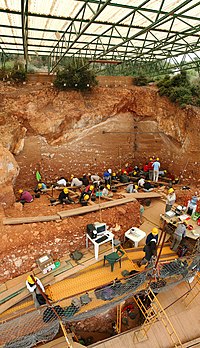
Photo from wikipedia
This article aims to raise issues for discussion about the change in the use and concept of sacred landscapes, which were originally constructed in the era of the Cypriot kings… Click to show full abstract
This article aims to raise issues for discussion about the change in the use and concept of sacred landscapes, which were originally constructed in the era of the Cypriot kings (the basileis), but then continued to function in a new imperial environment, that of the rule of the Ptolemaic strategos and later of the Roman proconsul and the various Christian bishops. Our archaeological survey project in the Xeros river valley, titled ‘Settled and Sacred Landscapes of Cyprus’, reveals that these new politico-economic structures were also supported by the construction of symbolically charged sacred landscapes. Thus, while outlining the long history of the island as manifested from the diachronic study of Cypriot sacred landscapes, we identify three pivotal phases: first, the consolidation of the Cypriot polities and the establishment of a ‘full’ sacred landscape; second, the transition from segmented to unitary administration under the Ptolemaic and Roman imperial rule and the consolidation of a more ‘unified sacred landscape’; and finally, the establishment of a number of Christian bishoprics on the island and the movement back to a ‘full’ sacred landscape. Moving beyond the discipline of Cypriot archaeology, this contribution aims to serve as a paradigm for the implications that the employment of the ‘sacred landscapes’ concept may have when addressing issues of socio-political and socio-economic transformations. While it is very difficult to define or capture the concept of landscape in a pre-modern world, it offers a useful means by which to assess changing local conditions. We have also attempted to situate the term in archaeological thought, in order to allow the concept to become a more powerful investigative tool for approaching the past.
Journal Title: Land
Year Published: 2017
Link to full text (if available)
Share on Social Media: Sign Up to like & get
recommendations!